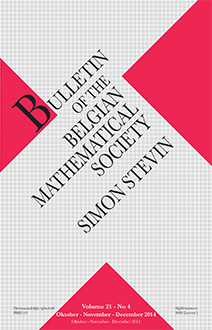Abstract
Let $p>0$ and let $\Omega\subset\Bbb C^{d}$ be a bounded, strictly pseudoconvex domain with boundary of class $C^{2}$. We consider a family of directions in the form of a continuous function $\gamma:\partial\Omega\times[0,1]\ni(z,t)\rightarrow\gamma(z,t)\in\overline{\Omega}$ satisfying some natural properties. Then for a given lower semicontinuous, strictly positive function $H$ on $\partial\Omega$ we construct a holomorphic function $f\in\Bbb O(\Omega)$ such that $H(z)=\int_{0}^{1}\left|f(\gamma(z,t))\right|^{p}dt$ for $\eta$-almost all $z\in\partial\Omega$ where $\eta$ is a given pro\-ba\-bility measure on $\partial\Omega$.
Citation
Piotr Kot. "Radon inversion problem for holomorphic functions on strictly pseudoconvex domains." Bull. Belg. Math. Soc. Simon Stevin 17 (4) 623 - 640, november 2010. https://doi.org/10.36045/bbms/1290608191
Information





